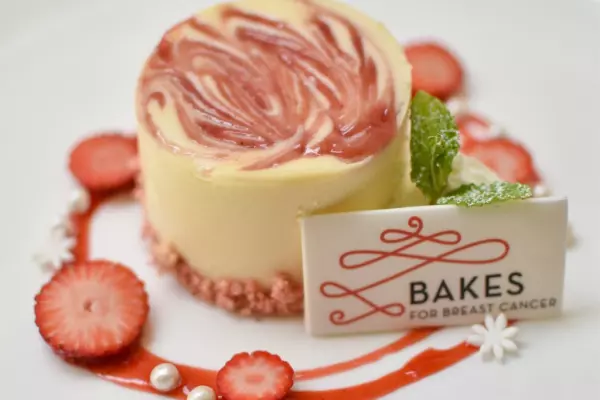 It’s been two weeks since I returned to the states from my Asia trip and I already miss the good eats there. I’ve already covered Beijing and Guangzhou in Part 1. For today’s blog post, I’ll give you a virtual food tour of Hong Kong and Macau. Formerly a British colony, Hong Kong is now a special administrative region of China, and its fast-paced culture and city life makes it parallel to New York City. Macau, a former Portuguese colony, is the other special administrative region of China, known as the “Las Vegas of Asia.” Both very different areas, but overflowing with tasty and colorful food options.
It’s been two weeks since I returned to the states from my Asia trip and I already miss the good eats there. I’ve already covered Beijing and Guangzhou in Part 1. For today’s blog post, I’ll give you a virtual food tour of Hong Kong and Macau. Formerly a British colony, Hong Kong is now a special administrative region of China, and its fast-paced culture and city life makes it parallel to New York City. Macau, a former Portuguese colony, is the other special administrative region of China, known as the “Las Vegas of Asia.” Both very different areas, but overflowing with tasty and colorful food options.
 The one thing I always look forward to most when I visit Hong Kong is the buttered pineapple bun. Although it doesn’t have any pineapple flavor at all, the name derives from its appearance where the surface of the bun resembles the pattern of a pineapple shell. This sweet bun is crispy on the outside and soft on the inside. It is commonly served warm with a couple slices of cold butter sandwiched inside. In Boston, the no-butter version is sold in Chinese bakeries in Chinatown, such as 101 Bakery, Bao Bao Bakery & Cafe, and Great Taste Bakery.
The one thing I always look forward to most when I visit Hong Kong is the buttered pineapple bun. Although it doesn’t have any pineapple flavor at all, the name derives from its appearance where the surface of the bun resembles the pattern of a pineapple shell. This sweet bun is crispy on the outside and soft on the inside. It is commonly served warm with a couple slices of cold butter sandwiched inside. In Boston, the no-butter version is sold in Chinese bakeries in Chinatown, such as 101 Bakery, Bao Bao Bakery & Cafe, and Great Taste Bakery.
Besides the pineapple bun, there is so much more to eat in Hong Kong – from street food to fine dining. Hong Kong seafood, in particular, is very fresh, seeing as a large part of Hong Kong is surrounded by the water with good fish farming preservation areas. One of the best meals I’ve ever had was a seafood dinner at Hing Kee Restaurant on Kowloon side of Hong Kong. The signature dish is the fried Gross or Typhoon Shelter Crab in a house-made garlic, chili pepper, and black bean dry spice rub. The combination of the naturally sweet crab meat and the flavorful spices makes it a unique dish. The other must-try seafood in Hong Kong is mantis shrimp, also known as pissing shrimp because of its tendency to shoot water when it’s picked up. It is much larger in size than regular shrimps (can grow up to 12 inches). When cooked, the shell is hard like the lobster’s, and the meat tastes similar to lobster as well. Mantis shrimp is commonly deep fried in salt, pepper and garlic.
As for street food, there is a wide variety of both sweet and savory snacks. Street food vendors are scattered along the shopping streets in Hong Kong. My favorite? Curry fish balls, freshly skewed upon ordering, and so spicy that you’ll head immediately next door for some fresh squeezed fruit juice.


Left, top to bottom: fried gross crab, skewed curry fish balls.
Right, top to bottom: live mantis shrimp from Temple Street wet market, salt & pepper fried mantis shrimp served at Hing Kee Restaurant.

If I had to choose my favorite food in Macau, it would have to be the Portuguese egg tart (I do have a sweet tooth, after all!). The sweet custard of the tart has a crème brûlée consistency, and the phyllo-like crust is flaky but not too crumbly. It tastes best when served warm. You know it’s good when everyone on the streets is eating one, on the go. Traditional Chinese egg tarts lack the torched and glazed surface and the flaky crust. In Boston, Portuguese egg tarts are sold in most Chinese bakeries.
Other popular Macanese snacks are jerky and pork chop bun. The beef and pork jerky options are endless in Macau. Walking through the populous snack street, samples of jerky from multiple shops are practically thrown at you. The flavors range from sweet to savory to spicy. Meanwhile, there is a Macanese stand that sells pork chop buns to a perpetual line of both tourists and locals. Macau is indeed a food haven nested among 33 grand casinos!
Fun fact: Chef Jamie Bissonnette of Boston’s Toro and Coppa recently explored the exotic dishes during his trip to the food mecca of Asia as well – read about his food adventure in Hong Kong here. Check back for next week’s post – Asia Food Tour, Part 3: Taipei, Taiwan!


One Comment